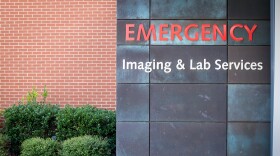It is a great time to become a physician in the U.S. There is a growing need for doctors of all kinds, so if you invest in medical school, chances are, you will find a job. By the end of this decade, itŌĆÖs projected that the country will be .
Though a lot of the talk regarding physician shortages has been focused on primary care, as the baby-boomer generation enters into old age. In just a few years, if you are dealing with a condition associated with aging such as dementia, cataracts, or prostate cancer, it might be hard to find the specialist you need.
And doctors themselves are aging. Some 40% of practicing doctors in the U.S. in 2012 are . So just as the patient population expands, a big wave of doctors will be approaching retirement age.
So, just train more doctors, right?
Well, the medical education system we have today was actually originally designed to make it harder for students to become physicians. Yes, you read that right. The system, created in the early 1900s, .

The path to becoming a doctor currently looks like this:
- 4 years of college
- 4 years of medical school
- 3-10 years of a medical residency depending on the chosen field
The 4-year medical curriculum and requirement of a college degree was added in the 1910s because there were too many ill-trained doctors entering into practice. At that time, most doctors graduated after only two years of studies, some without any laboratory experience and many with very limited or incorrect understanding of the human body. Those in charge wanted to make sure that every doctor had sufficient training, so a rigorous system was developed.
The system has remained essentially unchanged for over a century.
Changes Now
In this system, students who are ready can choose to 'test out' of a topic early by demonstrating the necessary knowledge and clinical skills.
The looming physician shortage has prompted many medical educators to champion a new way of teaching called . Instead of a set four-year medical school curriculum based on lectures and written exams, the CBME curriculum focuses on small-group experiences. In this system, students who are ready can choose to ŌĆ£test outŌĆØ of a topic early by demonstrating the necessary knowledge and clinical skills. This way, students who learn at different speeds are able to progress according to their abilities.
Instead of paper and pencil tests, student understanding is measured by a demonstration of skills and clinical decision making.
Proponents of the curriculum argue that it not only allows capable students the chance to graduate early, but it also captures skills such as communication, bedside manners and cultural awareness better than any multiple choice test could.
Critics say that such an overhaul would be costly and extensive, but the transition to CBME has already started. Last year, the , including Vanderbilt, Indiana University and UC San Francisco, to help them create a CBME curriculum.
One thing is certain: the population is aging and the numbers of doctors are shrinking. As the Affordable Care Act ushers in a new era of U.S. health care, the way we train doctors needs to change in order to meet the growing demand.












